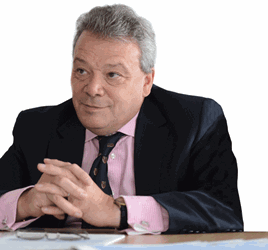“We can’t be complacent,” he stresses. “And so one of the key messages in the report [Health and Safety Report 2014-15] is that we focus on looking forward. All of our measures are currently backward-looking. They are essentially lagging indicators, and what’s very important is to look forward and try to predict and prevent.
“This is why a lot of focus for me since I’ve been here is to not only increase proactive inspection, but also to try and understand management maturity and organisation so that we can better predict and prevent incidents.”
In what even HMRI today concedes was a dark period for it, under Health & Safety Executive ‘ownership’ in the 1990s, the messages I recall were all about less inspection and increasing responsibility on the ‘duty holder’ to self-police and do his job, to ensure safety.
A thorn in the side for HMRI after the collision that killed 31 people at Ladbroke Grove was that the controversial track layout in the Paddington station approach beyond SN109 (passed at danger by the Thames Turbo, which then collided head-on with a high-speed inbound HST) had never been approved by HMRI.
So, is this an acceptance that the HSE philosophy was flawed, and that a greater degree of inspection is required?
“We’re not responsible for complying with the law, that’s the duty holder’s responsibility,” says Prosser with great firmness. “They must have their own adequate procedures.
“It is our job and our statutory duty to supervise not just the duty holder’s arrangements to control risk, but also to supervise their own assurance processes. In some duty holders we have found weaknesses in their assurance processes. It is therefore very important for us to target effectively, because we can’t - as you say - inspect everything.
“So we have developed a management maturity model which helps us target organisations’ weaknesses and understand their management capabilities better, so that we can target that resource to where it’s really needed.”
But surely you can only do all that by actually getting out there and having a look?
“Yes.”
So are there now many more inspections happening?
“There is more re-inspection going on than when I arrived here. We have a lot of statutory work to do and we have to obviously investigate incidents, which also give you important learning from which recommendations come. Inspectors spend just over half of their time actually out making inspections - and that is a big increase on what was happening when I got here seven years ago, when the figure was probably in the high 20s.”
So do you have more inspectors - or are the same number working more productively?
“We have the same number of inspectors, but we have reduced our costs over seven years by 30%. I have also made sure we don’t have layers of inspectors sitting in management - I want inspectors out there, not sitting in here. I’ve been very active myself on inspections - I get out and about as much as I can.”
Is it the case that inspections in the digital and high-tech age are as much about inspecting process and paperwork, as they used to be about checking signal boxes, interlocking and trackwork?
“I wouldn’t say we’re out there doing the job that the duty holder should do, but certainly my focus has been ‘boots on ballast’ - which does mean that what’s very important for us is to look at the paperwork, but then make sure that what the paperwork demands matches what actually happens on the ground.”
To make sure you have an integrated and effective operating system - not just a row of ring binders on a shelf saying one thing, while front end staff do something else?
“Correct - and that is very important. We find senior management thinking they’re getting outcomes, but they aren’t actually happening. A big problem is that what’s stipulated in the plan isn’t understood by the workforce, leading to loopholes in safety.”
Does he think that having a generation of managers emerging who have never had personal experience of the industry under stress after a fatal accident is a safety risk in itself? Does that breed complacency or a lack of vigilance, thereby increasing risk?
Prosser takes the point: “I will tell you that all the probability calculations tell you that presently the probability of a fatal passenger train accident is one in eight years. So right now we are running hard up against that probability, given that Grayrigg was in February 2007, just over eight years ago.
“It is especially important that we maintain our vigilance, given that we have lots of people in the industry now who weren’t around in what I call the bad old days. The currently ongoing safety record is something we just cannot take for granted, and that’s really important - we cannot and must not take this for granted. We do have quite a lot of pressures on the system.”
In his own words, this sums up why a safety regulator needs to keep “banging on” about this message.














Login to comment
Comments
No comments have been made yet.